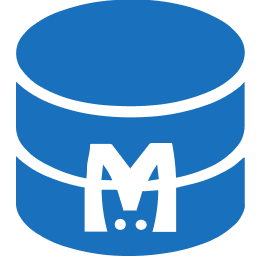You are looking at the documentation of a prior release. To read the documentation of the latest release, please
visit here.
New to KubeDB? Please start here.
MongoDB External Connections Outside Kubernetes using MongoDB Horizons
MongoDB Horizons is a feature in MongoDB that enables external connections to MongoDB replica sets deployed within Kubernetes. It allows applications or clients outside the Kubernetes cluster to connect to individual replica set members by mapping internal Kubernetes DNS names to externally accessible hostnames or IP addresses. This is useful for scenarios where external access is needed, such as hybrid deployments or connecting from outside the cluster.
Before You Begin
At first, you need to have a Kubernetes cluster, and the kubectl command-line tool must be configured to communicate with your cluster. If you do not already have a cluster, you can create one by using kind.
Now, install KubeDB cli on your workstation and KubeDB operator in your cluster following the steps here.
- Install
cert-mangerv1.0.0 or later to your cluster to manage your SSL/TLS certificates. As We must need tls enabled MongoDB for this tutorial.
To keep things isolated, this tutorial uses a separate namespace called demo throughout this tutorial.
$ kubectl create ns demo
namespace/demo created
Note: YAML files used in this tutorial are stored in docs/examples/mongodb folder in GitHub repository kubedb/docs.
Prerequisites
We need to have the following prerequisites to run this tutorial:
Install Voyager Gateway
Install voyager gateway using the following command:
helm install ace oci://ghcr.io/appscode-charts/voyager-gateway \
--version v2025.6.30 \
-n ace-gw --create-namespace \
--set gateway-converter.enabled=false \
--wait --burst-limit=10000 --debug
Create EnvoyProxy and GatewayClass
We need to setup EnvoyProxy and GatewayClass to use voyager gateway.
Create EnvoyProxy using the following command:
apiVersion: gateway.envoyproxy.io/v1alpha1
kind: EnvoyProxy
metadata:
name: ace
namespace: ace-gw
spec:
logging:
level:
default: warn
mergeGateways: true
provider:
kubernetes:
envoyDeployment:
container:
image: ghcr.io/voyagermesh/envoy:v1.34.1-ac
securityContext:
allowPrivilegeEscalation: false
capabilities:
drop:
- ALL
privileged: false
runAsNonRoot: true
runAsUser: 65534
seccompProfile:
type: RuntimeDefault
patch:
value:
spec:
template:
spec:
containers:
- name: shutdown-manager
securityContext:
allowPrivilegeEscalation: false
capabilities:
drop:
- ALL
privileged: false
runAsNonRoot: true
runAsUser: 65534
seccompProfile:
type: RuntimeDefault
envoyService:
externalTrafficPolicy: Cluster
type: LoadBalancer
type: Kubernetes
If you want to use
NodePortservice. Update.spec.provider.kubernetes.envoyService.typetoNodePortin the above YAML.
$ kubectl apply -f https://github.com/kubedb/docs/raw/v2025.6.30/docs/examples/mongodb/horizons/envoyproxy.yaml
envoyproxy.gateway.envoyproxy.io/ace created
Before creating
GatewayClass, create a certificate secret namedace-gw-certin ace namespace.
Create GatewayClass using the following command:
apiVersion: gateway.networking.k8s.io/v1
kind: GatewayClass
metadata:
annotations:
catalog.appscode.com/gateway-config: |-
frontendTLSSecretRef:
name: ace-gw-cert
namespace: ace
service:
externalTrafficPolicy: Cluster
nodeportRange: 30000-32767
portRange: 10000-12767
seedBackendPort: 8080
type: LoadBalancer
vaultServer:
name: vault
namespace: ace
catalog.appscode.com/is-default-gatewayclass: "true"
name: ace
spec:
controllerName: gateway.envoyproxy.io/gatewayclass-controller
description: Default Service GatewayClass
parametersRef:
group: gateway.envoyproxy.io
kind: EnvoyProxy
name: ace
namespace: ace-gw
$ kubectl apply -f https://github.com/kubedb/docs/raw/v2025.6.30/docs/examples/mongodb/horizons/gatewayclass.yaml
gatewayclass.gateway.networking.k8s.io/ace created
Check the GatewayClass status True.
$ kubectl get gatewayclass
NAME CONTROLLER ACCEPTED AGE
ace gateway.envoyproxy.io/gatewayclass-controller True 16s
Install FluxCD in your cluster
Install FluxCD in your cluster using the following command:
helm upgrade -i flux2 \
oci://ghcr.io/appscode-charts/flux2 \
--version 2.15.0 \
--namespace flux-system --create-namespace \
--wait --debug --burst-limit=10000
Install Keda
Install Keda in your cluster using the following command:
$ kubectl create ns kubeops
namespace/kubeops created
$ kubectl apply -f https://github.com/kubedb/docs/raw/v2025.6.30/docs/examples/mongodb/horizons/helrepo.yaml
helmrepository.source.toolkit.fluxcd.io/appscode-charts-oci created
$ kubectl apply -f https://github.com/kubedb/docs/raw/v2025.6.30/docs/examples/mongodb/horizons/keda.yaml
helmrelease.helm.toolkit.fluxcd.io/keda created
helmrelease.helm.toolkit.fluxcd.io/keda-add-ons-http created
Install Catalog Manager
Install Catalog Manager in your cluster using the following command:
helm install catalog-manager oci://ghcr.io/appscode-charts/catalog-manager \
--version=v2025.6.30 \
-n ace --create-namespace \
--set helmrepo.name=appscode-charts-oci \
--set helmrepo.namespace=kubeops \
--wait --burst-limit=10000 --debug
Overview
KubeDB uses following crd fields to enable MongoDB Horizons:
spec:replicaSet:namehorizonsdnspods
Read about the fields in details in mongodb concept,
Create Issuer/ ClusterIssuer
We are going to create an example Issuer that will be used throughout the duration of this tutorial to enable SSL/TLS in MongoDB. Alternatively, you can follow this cert-manager tutorial to create your own Issuer.
- Start off by generating you ca certificates using openssl.
openssl req -x509 -nodes -days 365 -newkey rsa:2048 -keyout ./ca.key -out ./ca.crt -subj "/CN=mongo/O=kubedb"
- Now create a ca-secret using the certificate files you have just generated.
kubectl create secret tls mongo-ca \
--cert=ca.crt \
--key=ca.key \
--namespace=demo
Now, create an Issuer using the ca-secret you have just created. The YAML file looks like this:
apiVersion: cert-manager.io/v1
kind: Issuer
metadata:
name: mongo-ca-issuer
namespace: demo
spec:
ca:
secretName: mongo-ca
Apply the YAML file:
$ kubectl create -f https://github.com/kubedb/docs/raw/v2025.6.30/docs/examples/mongodb/tls/issuer.yaml
issuer.cert-manager.io/mongo-ca-issuer created
MongoDB Replicaset with Horizons
Create DNS Records
Create dns A/CNAME records for mongodb replicaset pods, let’s say, MongoDB has 3 replicas.
Example:
DNS:kubedb.cloud, this will be used to connect to the MongoDB replica set usingmongodb+srv.A/CNAME Recordfor each MongoDB replicas with exposed Envoy GatewayLoadBalancer/NodePortIP/Host:mongo-0.kubedb.cloudmongo-1.kubedb.cloudmongo-2.kubedb.cloud
Below is the YAML for MongoDB Replicaset Horizons. Here, spec.replicaSet.horizons specifies horizons for replicaset.
apiVersion: kubedb.com/v1
kind: MongoDB
metadata:
name: mongodb-horizons
namespace: demo
spec:
clusterAuthMode: x509
deletionPolicy: WipeOut
replicaSet:
horizons:
dns: kubedb.cloud
pods:
- mongo-0.kubedb.cloud
- mongo-1.kubedb.cloud
- mongo-2.kubedb.cloud
name: rs0
replicas: 3
sslMode: requireSSL
storage:
accessModes:
- ReadWriteOnce
resources:
requests:
storage: 2Gi
storageEngine: wiredTiger
storageType: Durable
tls:
certificates:
- alias: server
dnsNames:
- kubedb.cloud
- mongo-0.kubedb.cloud
- mongo-1.kubedb.cloud
- mongo-2.kubedb.cloud
issuerRef:
apiGroup: cert-manager.io
kind: Issuer
name: mongo-ca-issuer
version: 7.0.16
Here,
.spec.replicaSet.horizons.dnsspecifies the DNSSRVrecord for the MongoDB replica set. It serves as the base domain for the SRV record used inmongodb+srvconnection strings..spec.replicaSet.horizons.podsspecifies the DNS names for each pod in the replica set. These pod-specific DNS names are used to createSRVrecords that map to the individual MongoDB pods (e.g.,mongo-0,mongo-1,mongo-2)..spec.tls.certificatesspecifies the certificate details for the MongoDB replica set. The dnsNames field under.spec.tls.certificatesmust include the replica set’s primary DNS (e.g.,kubedb.cloud) and the DNS names of all pods listed in.spec.replicaSet.horizons.pods
Note: If you don’t want to use
mongodb+srvconnection string, you can connect to the MongoDB replica set using the individual pod DNS names (e.g.,mongo-0.kubedb.cloud:10000,mongo-1.kubedb.cloud:10001, etc.).
Deploy MongoDB Replicaset Horizons
$ kubectl create -f https://github.com/kubedb/docs/raw/v2025.6.30/docs/examples/mongodb/horizons/mongodb.yaml
mongodb.kubedb.com/mongodb-horizons created
Now, wait until mongodb-horizons has status Ready. i.e,
$ watch kubectl get mg -n demo
Every 2.0s: kubectl get mg -n demo
NAME VERSION STATUS AGE
mongodb-horizons 7.0.16 Ready 4m10s
Now, create MongoDBBinding object to configure the whole process.
apiVersion: catalog.appscode.com/v1alpha1
kind: MongoDBBinding
metadata:
name: mongodb-bind
namespace: demo
spec:
sourceRef:
name: mongodb-horizons
namespace: demo
$ kubectl create -f https://github.com/kubedb/docs/raw/v2025.6.30/docs/examples/mongodb/horizons/binding.yaml
mongodbbinding.catalog.appscode.com/mongodb-bind created
Now, check the status of mongodbbinding objects and ops requests.
$ kubectl get mongodbbinding,mongodbopsrequest -n demo
NAME SRC_NS SRC_NAME STATUS AGE
mongodbbinding.catalog.appscode.com/mongodb-bind demo mongodb-horizons Current 3m28s
NAME TYPE STATUS AGE
mongodbopsrequest.ops.kubedb.com/mongodb-horizons-jddiql Horizons Successful 2m58s
Connect to MongoDB as Replicaset
To connect to the MongoDB replica set, you can use the following command:
Collect the replicas from the mongodb-horizons object:
$ kubectl get mongodb -n demo mongodb-horizons -ojson | jq .spec.replicaSet.horizons.pods
[
"mongo-0.kubedb.cloud:10000",
"mongo-1.kubedb.cloud:10001",
"mongo-2.kubedb.cloud:10002"
]
$ mongosh "mongodb://root:<password>@mongo-0.kubedb.cloud:10000,mongo-1.kubedb.cloud:10001,mongo-2.kubedb.cloud:10002/admin?authSource=admin&tls=true&tlsCAFile=<ca.crt-path>"
rs0 [primary] admin>
Connect Using MongoDB SRV
To connect to the MongoDB replica set using mongodb+srv, you need to create srv records with the A/CNAME records you created earlier like,
srv-host=_mongodb._tcp.kubedb.cloud,mongo-0.kubedb.cloud,10000
srv-host=_mongodb._tcp.kubedb.cloud,mongo-1.kubedb.cloud,10001
srv-host=_mongodb._tcp.kubedb.cloud,mongo-2.kubedb.cloud,10002
Create a TXT record for the SRV records you created above.
txt-record=kubedb.cloud,"replicaSet=rs0&authSource=admin"
You can keep it empty.
Now, you can connect to the MongoDB replica set using the following command:
$ mongosh "mongodb+srv://root:<password>@kubedb.cloud/admin?tls=true&tlsCAFile=<ca.crt-path>"
rs0 [primary] admin>
You can use
ca.crtfrom default path.
sudo cp ca.crt /usr/local/share/ca-certificates/ca.crt
sudo update-ca-certificates
Now, you can connect without specifying tlsCAFile in the connection string.
$ mongosh "mongodb+srv://root:<password>@kubedb.cloud/admin"
rs0 [primary] admin>
Cleaning up
To cleanup the Kubernetes resources created by this tutorial, run:
kubectl delete mongodbbinding -n demo mongodb-bind
kubectl delete mongodb -n demo mongodb-horizons
kubectl delete gatewayclass ace
kubectl delete -n ace-gw envoyproxy ace
helm uninstall -n ace catalog-manager
If you would like to uninstall the KubeDB operator, please follow the steps here.
Next Steps
- Quickstart MongoDB with KubeDB Operator.
- Backup and Restore MongoDB instances using Stash.
- Initialize MongoDB with Script.
- Monitor your MongoDB instance with KubeDB using out-of-the-box Prometheus operator.
- Monitor your MongoDB instance with KubeDB using out-of-the-box builtin-Prometheus.
- Use private Docker registry to deploy MongoDB with KubeDB.
- Use kubedb cli to manage databases like kubectl for Kubernetes.
- Detail concepts of MongoDB object.
- Want to hack on KubeDB? Check our contribution guidelines.






























